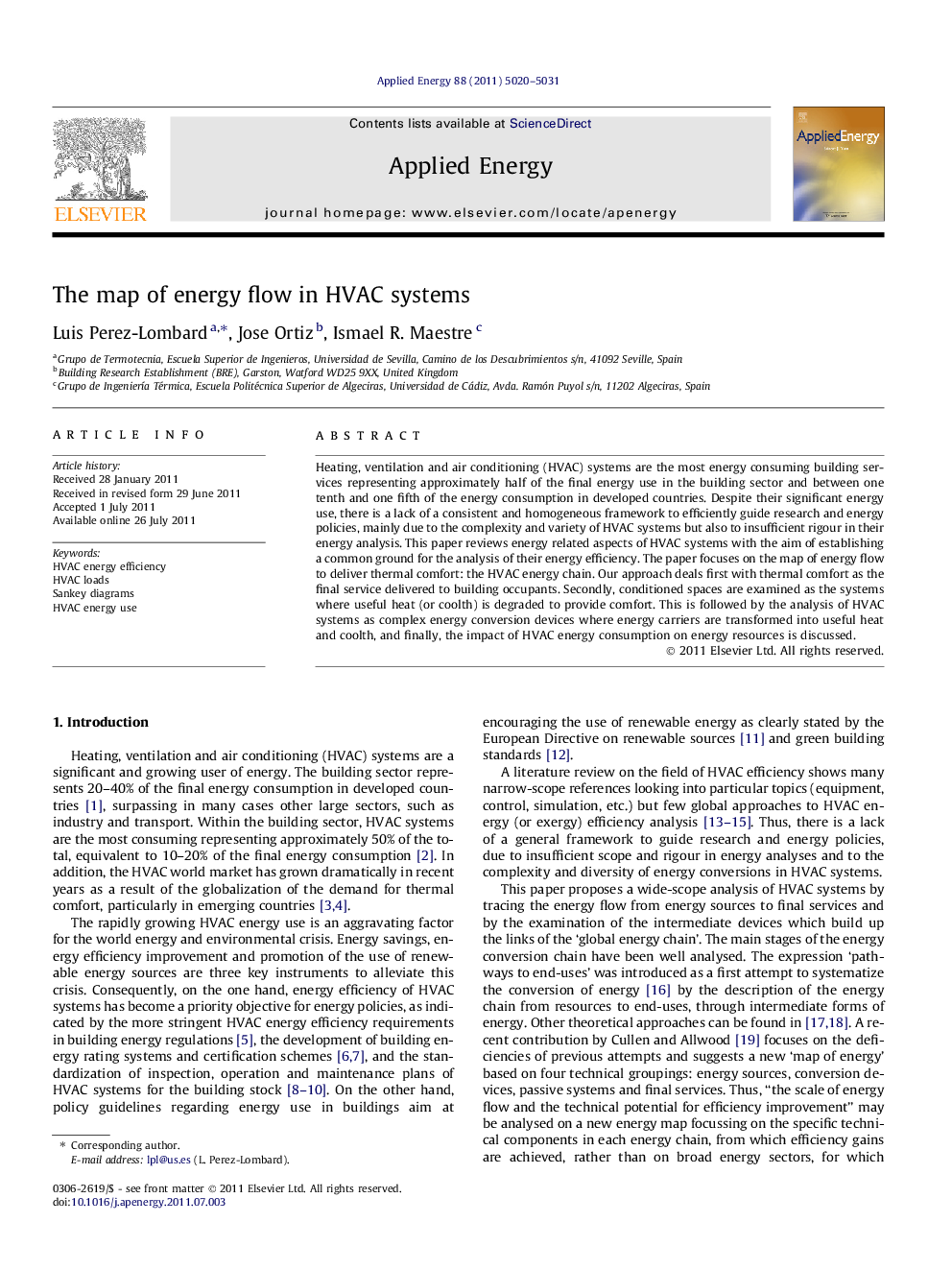| Article ID | Journal | Published Year | Pages | File Type |
|---|---|---|---|---|
| 244027 | Applied Energy | 2011 | 12 Pages |
Heating, ventilation and air conditioning (HVAC) systems are the most energy consuming building services representing approximately half of the final energy use in the building sector and between one tenth and one fifth of the energy consumption in developed countries. Despite their significant energy use, there is a lack of a consistent and homogeneous framework to efficiently guide research and energy policies, mainly due to the complexity and variety of HVAC systems but also to insufficient rigour in their energy analysis. This paper reviews energy related aspects of HVAC systems with the aim of establishing a common ground for the analysis of their energy efficiency. The paper focuses on the map of energy flow to deliver thermal comfort: the HVAC energy chain. Our approach deals first with thermal comfort as the final service delivered to building occupants. Secondly, conditioned spaces are examined as the systems where useful heat (or coolth) is degraded to provide comfort. This is followed by the analysis of HVAC systems as complex energy conversion devices where energy carriers are transformed into useful heat and coolth, and finally, the impact of HVAC energy consumption on energy resources is discussed.
► Discussion of the four stages in the ‘HVAC systems energy chain’. ► Examination of HVAC systems as energy conversion devices. ► Analysis of HVAC Sankey diagrams. ► Discussion of HVAC loads and HVAC energy losses.
